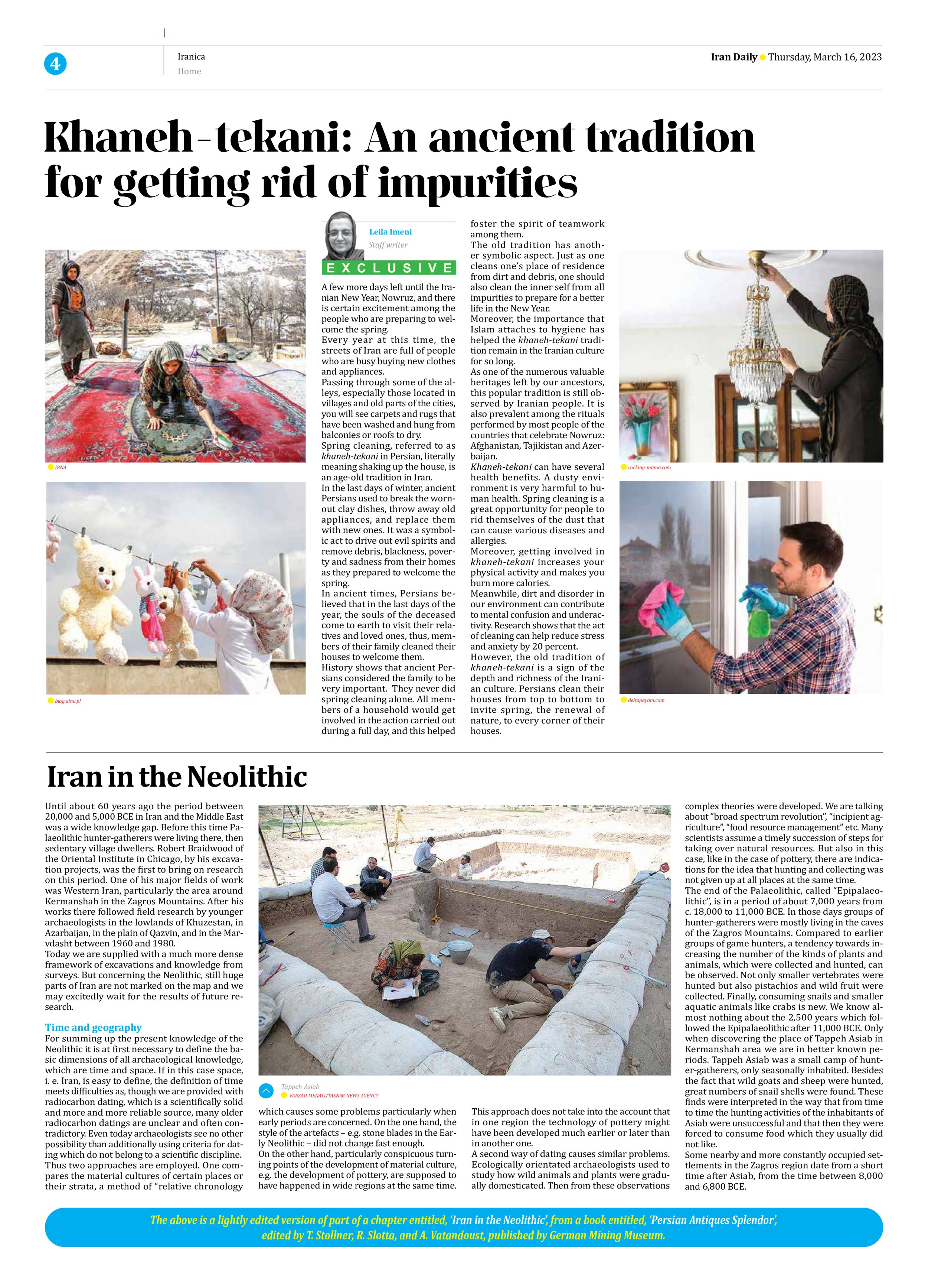
Iran in the Neolithic
Until about 60 years ago the period between 20,000 and 5,000 BCE in Iran and the Middle East was a wide knowledge gap. Before this time Palaeolithic hunter-gatherers were living there, then sedentary village dwellers. Robert Braidwood of the Oriental Institute in Chicago, by his excavation projects, was the first to bring on research on this period. One of his major fields of work was Western Iran, particularly the area around Kermanshah in the Zagros Mountains. After his works there followed field research by younger archaeologists in the lowlands of Khuzestan, in Azarbaijan, in the plain of Qazvin, and in the Marvdasht between 1960 and 1980.
Today we are supplied with a much more dense framework of excavations and knowledge from surveys. But concerning the Neolithic, still huge parts of Iran are not marked on the map and we may excitedly wait for the results of future research.
Time and geography
For summing up the present knowledge of the Neolithic it is at first necessary to define the basic dimensions of all archaeological knowledge, which are time and space. If in this case space, i. e. Iran, is easy to define, the definition of time meets difficulties as, though we are provided with radiocarbon dating, which is a scientifically solid and more and more reliable source, many older radiocarbon datings are unclear and often contradictory. Even today archaeologists see no other possibility than additionally using criteria for dating which do not belong to a scientific discipline.
Thus two approaches are employed. One compares the material cultures of certain places or their strata, a method of “relative chronology which causes some problems particularly when early periods are concerned. On the one hand, the style of the artefacts – e.g. stone blades in the Early Neolithic – did not change fast enough.
On the other hand, particularly conspicuous turning points of the development of material culture, e.g. the development of pottery, are supposed to have happened in wide regions at the same time. This approach does not take into the account that in one region the technology of pottery might have been developed much earlier or later than in another one.
A second way of dating causes similar problems. Ecologically orientated archaeologists used to study how wild animals and plants were gradually domesticated. Then from these observations complex theories were developed. We are talking about “broad spectrum revolution”, “incipient agriculture”, “food resource management” etc. Many scientists assume a timely succession of steps for taking over natural resources. But also in this case, like in the case of pottery, there are indications for the idea that hunting and collecting was not given up at all places at the same time.
The end of the Palaeolithic, called “Epipalaeolithic”, is in a period of about 7,000 years from c. 18,000 to 11,000 BCE. In those days groups of hunter-gatherers were mostly living in the caves of the Zagros Mountains. Compared to earlier groups of game hunters, a tendency towards increasing the number of the kinds of plants and animals, which were collected and hunted, can be observed. Not only smaller vertebrates were hunted but also pistachios and wild fruit were collected. Finally, consuming snails and smaller aquatic animals like crabs is new. We know almost nothing about the 2,500 years which followed the Epipalaeolithic after 11,000 BCE. Only when discovering the place of Tappeh Asiab in Kermanshah area we are in better known periods. Tappeh Asiab was a small camp of hunter-gatherers, only seasonally inhabited. Besides the fact that wild goats and sheep were hunted, great numbers of snail shells were found. These finds were interpreted in the way that from time to time the hunting activities of the inhabitants of Asiab were unsuccessful and that then they were forced to consume food which they usually did not like.
Some nearby and more constantly occupied settlements in the Zagros region date from a short time after Asiab, from the time between 8,000 and 6,800 BCE.
The above is a lightly edited version of part of a chapter entitled, ‘Iran in the Neolithic’, from a book entitled, ‘Persian Antiques Splendor’,
edited by T. Stollner, R. Slotta, and A. Vatandoust, published by German Mining Museum.







